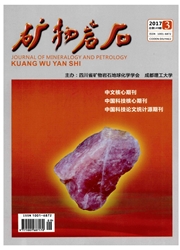

 中文摘要:
中文摘要:
准噶尔盆地西北缘油田勘探开发早期,对控制油藏的大断裂已有认识。进入开发后期,油区内部的微小断层的作用逐步突显出来,微小断层在油田开发中是导致地层砂体不连通、注采不对应、剩余油分布不均的重要原因。通过开发后期精细地震资料解释结合小并距密集分布的单井资料对比分析,总结出在准噶尔盆地西北缘油区内主要发育五种类型的断裂构造样式:逆冲叠式、“y”字型式、逆冲楔入式、背冲构造式和走滑扭断式。根据生产动态剖析认为油区内部微小断层对生产动态及剩余油分布具有重要影响,体现在影响断裂两侧储层性质分布差异、水驱油效果的差异、油水空间运动规律、油水界面的差异、注采效果差异等诸多方面,总之:综合运用各种资料分析是精细刻画储层提高采出程度的基础。
 英文摘要:
英文摘要:
In the early stage of the oil exploration and development in the northwestern margin of Junggar basin,it was realized that large-scale faults controlled the reservoirs boundary and distribution. However, during the oil development stage, the important role of small and micro-faults in the distribution of oil began to emerge. These small faults resulted in the disconnection of sand bodies and the uneven distribution of residual oil. Through fine seismic data interpretation from densely spacing drilling well, five types of micro-faults were recognized, they were imbricate thrust type, "y" type, thrust wedge type, back blunt structure type and strike-slip type respectively. According to production dynamic analysis, micro-faults play an important role in the oil production dynamics and residual oil distribution. It reflected the difference of reservoir property distribution along the fracture, water displacement efficiency, oil and water motion space, boundary of injection-production,and so on. It was thought that comprehensive use of various data was the foundation of fine description of reservoir and improvement of recovery degree.
 同期刊论文项目
同期刊论文项目
 同项目期刊论文
同项目期刊论文
 期刊信息
期刊信息
